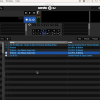One of the most frequent topics of discussions that pops up on the blog and on the forums is around transitions. With DJ software such as Traktor Pro 2 and Serato DJ, DJs have endless creative tools at their disposal to transition between tracks, even if they’re in completely different tempo ranges. Today Matthew Ray shares a cool transition trick that can be used to seamlessly switch from between different BPMs. Check out the video to see the transition in action.
Transition Trick: Loop Out Move
Using a combination of loop adjustment, echo freeze, and a wide pitch range DJs can create a rising and falling effect to move between radically different BPMs. Although Traktor is being used in the video, this trick can be applied to any DJ software and can even be used with CDJs or the new XDJ-1000. There are a few steps to make this transition work:
Turn off snap/quantize in Traktor (for Serato turn off quantize) – This will allow DJs to set loops that don’t snap to the beat grid
Turn off sync for both decks – Now the pitch/tempo can freely be adjusted on the incoming track without affecting the other track
Turn keylock off (master tempo on the CDJs) – Turning off keylock will make it easier to achieve the rising/falling effect
Set tempo range to 100% (on CDJs set tempo range to “wide”) – With a wide tempo range DJs can make massive BPM transitions
Now it’s time to get creative. Find a part of the track that has a recognizable bassline, lead, or melody. Ideally it’ll be a section of the track that doesn’t have any drums. Once you’ve found a suitable section, set a really short loop (not too short though, otherwise there will be a noticeable rise in pitch). Now bring up the volume of the incoming track and slowly move the tempo fader up to create a rising effect. Use an echo freeze to mix out of the old track and bring the tempo fader of the incoming song back to it’s original tempo (this will create a falling effect). Adjust the loop out position, then exit the loop to drop the track into the familiar section to surprise your audience.
There are so many creative ways to transition between tracks. The important thing is to experiment and not be bound by “rules”. Just because 2 tracks are in completely different BPM ranges doesn’t mean they’re off limits. Think outside the box and maybe you’ll discover a new trick for transitioning that you can share with the DJ community.











